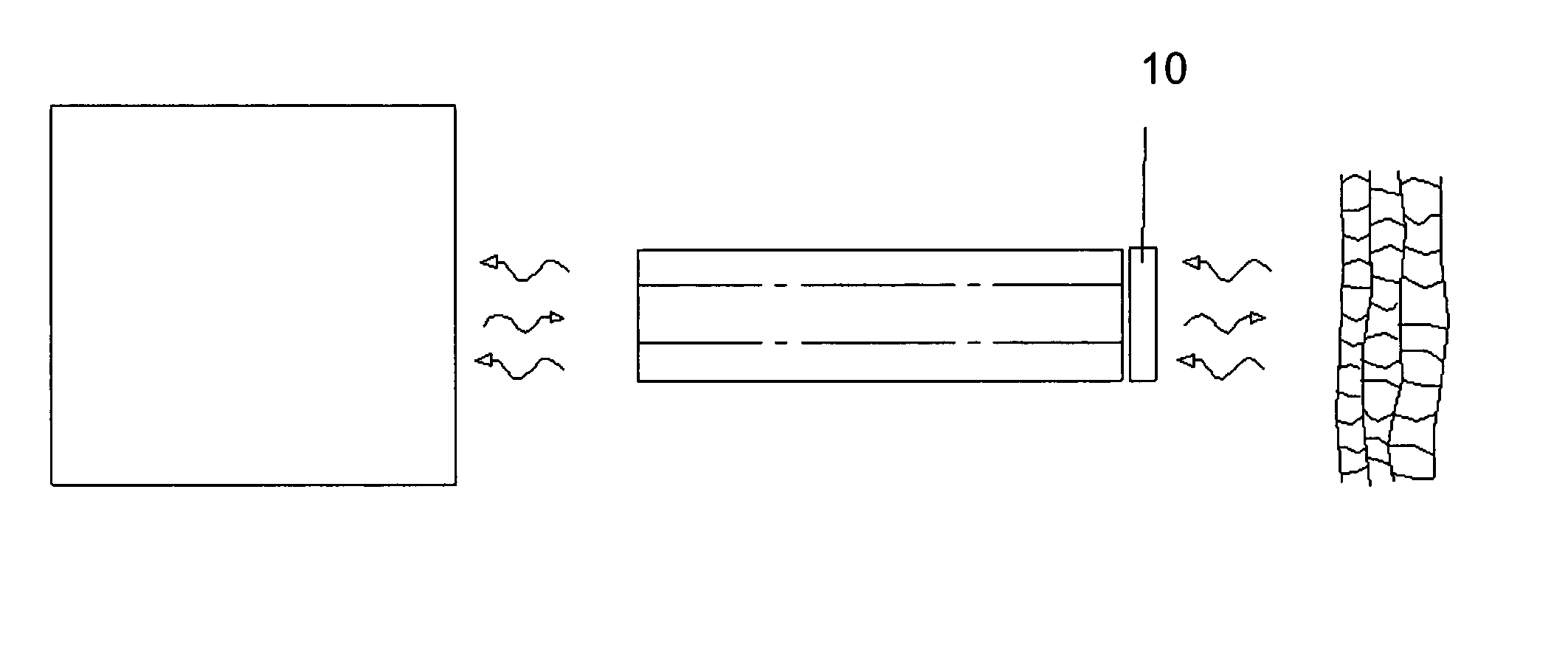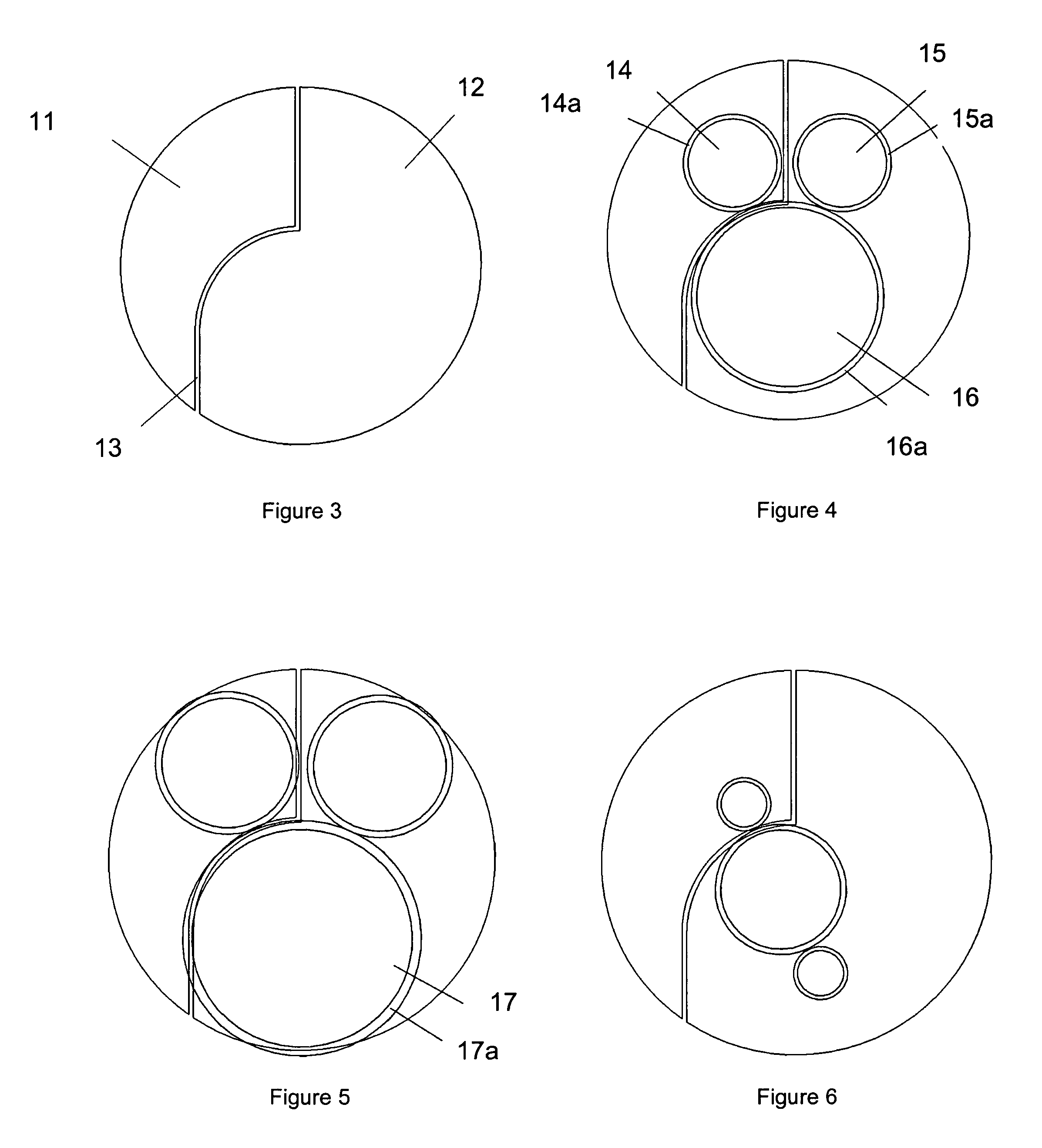Polarized optical probes
a technology of optical probes and fiberoptic probes, applied in the direction of optical radiation measurement, instruments, polarisation-affecting properties, etc., can solve the problems of inability to bring analytical instruments to the sample, limited physical access to the sample, and historically limited polarization detection of fiberoptic probes. , to achieve the effect of high degree of cross-polarization
- Summary
- Abstract
- Description
- Claims
- Application Information
AI Technical Summary
Benefits of technology
Problems solved by technology
Method used
Image
Examples
Embodiment Construction
[0045]An embodiment of the present invention is shown schematically in FIG. 2. Pixelated variably-polarizing substrate assembly 10 is placed at the sample end of probe 3. Substrate assembly 10 has one or more discrete polarized areas defining particular polarization orientations, each such area (called a “pixel” herein) defining a single polarization axis. In most applications in which there are two pixels, the polarization axes of the pixels will be orthogonal with respect to one another. The pixels are sized, shaped and located to correspond to the size, shape and location at the probe sample end of the optical channels of the probe. Pixelated substrate assembly 10 has a thickness that results in an acceptable level of Fresnel reflections in small diameter probes (defined as probes with a distal tip diameter of less than 25 mm, and preferably less than about 10 mm). Typically, pixelated substrate assembly 10 is no more than about 200 microns thick.
[0046]This invention accomplishes...
PUM
| Property | Measurement | Unit |
|---|---|---|
| thick | aaaaa | aaaaa |
| grazing angle technique | aaaaa | aaaaa |
| depth | aaaaa | aaaaa |
Abstract
Description
Claims
Application Information
 Login to View More
Login to View More - R&D
- Intellectual Property
- Life Sciences
- Materials
- Tech Scout
- Unparalleled Data Quality
- Higher Quality Content
- 60% Fewer Hallucinations
Browse by: Latest US Patents, China's latest patents, Technical Efficacy Thesaurus, Application Domain, Technology Topic, Popular Technical Reports.
© 2025 PatSnap. All rights reserved.Legal|Privacy policy|Modern Slavery Act Transparency Statement|Sitemap|About US| Contact US: help@patsnap.com



